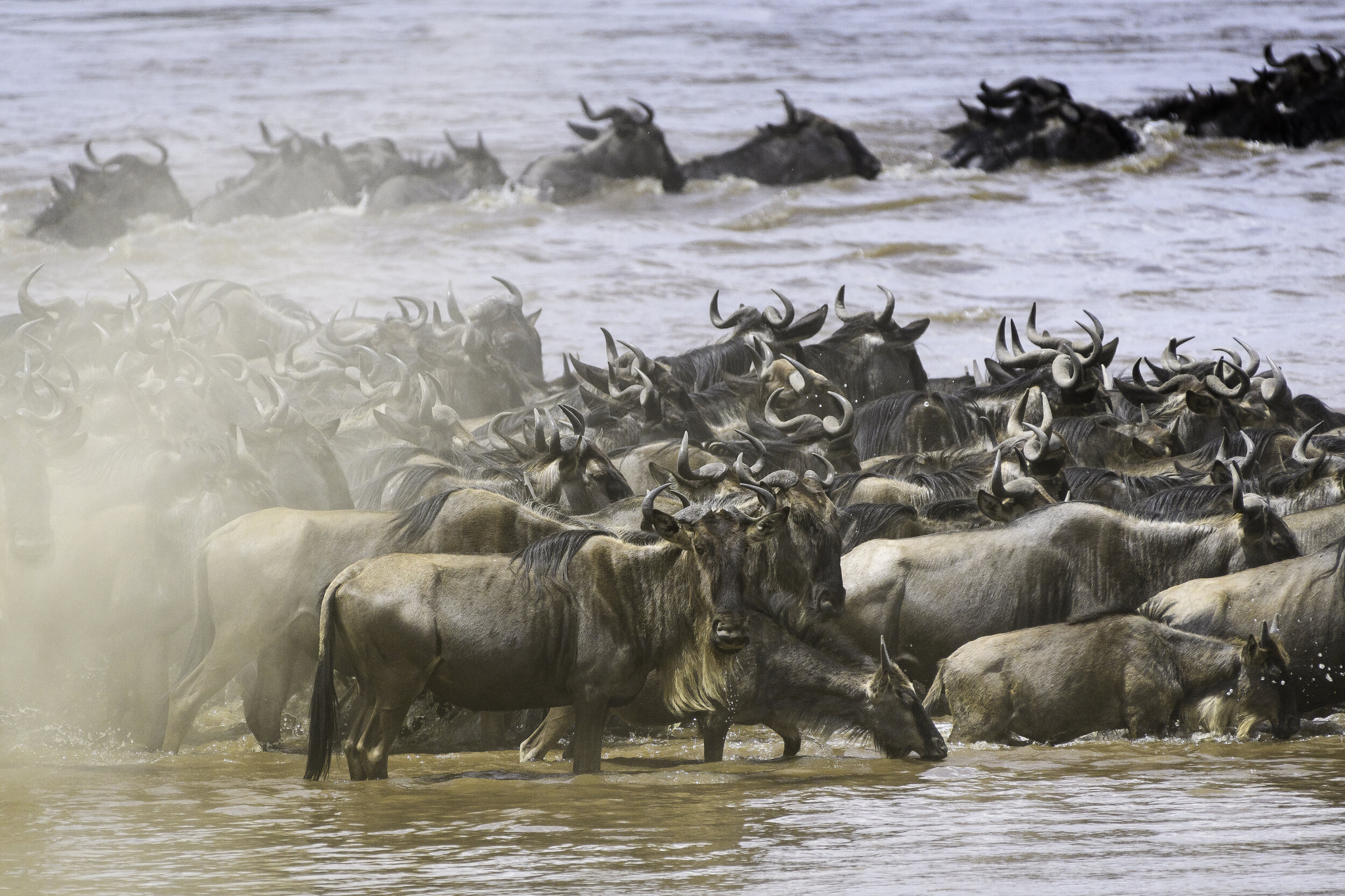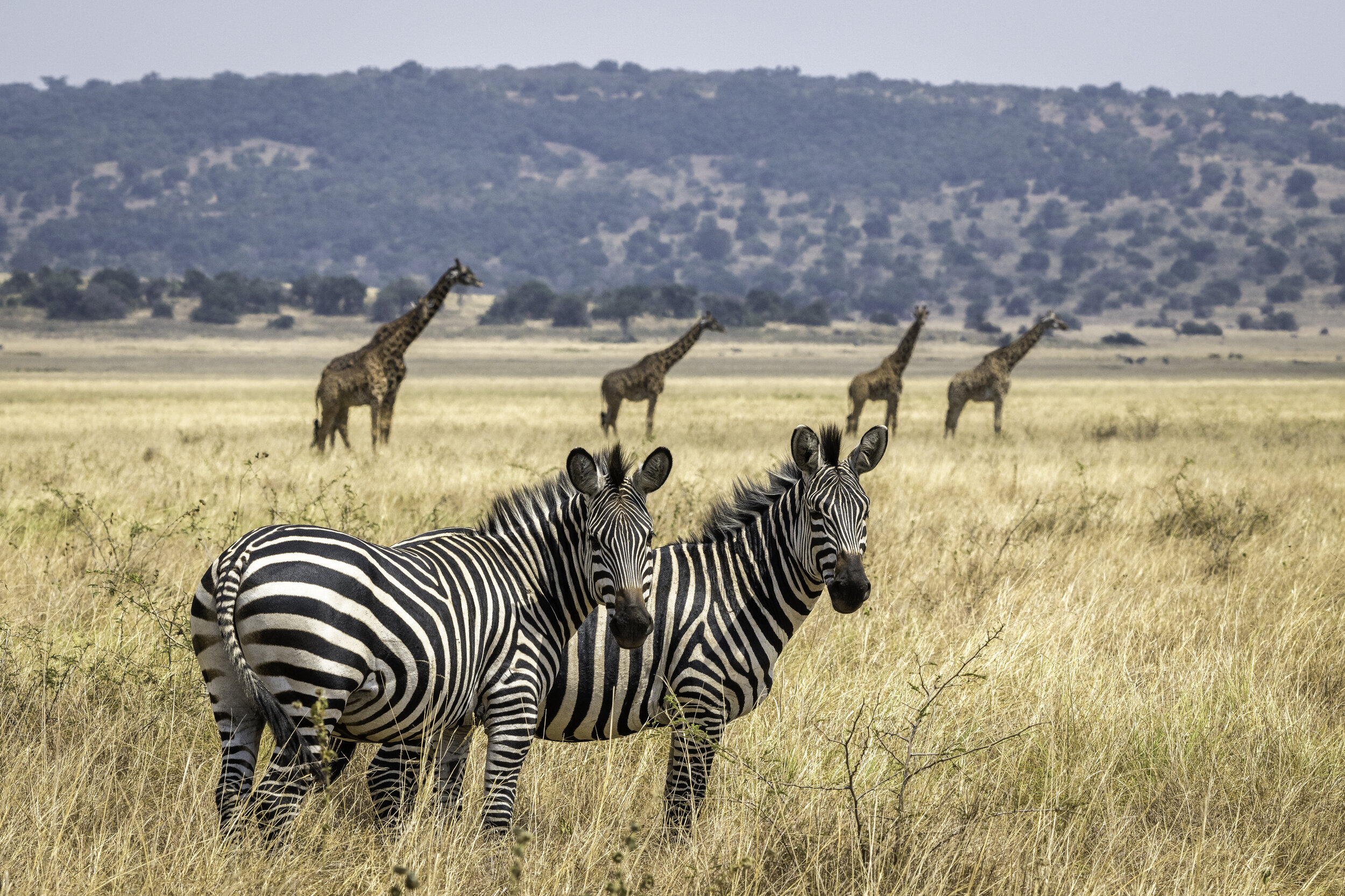The Great Migration in Eastern Africa
The Migration is truly one of the wonders of the animal world; a million and more animals playing out their lives in the Serengeti eco-system, watched all the way by lions, hyenas, and crocodiles looking for dinner. So, what is the best time and where is the best place to catch this spectacle?
Dreamed of witnessing the seething masses of wildlife migrating across the Serengeti Plains? A great spectacle to behold and something not to miss at least once in your lifetime! It has been seen in a myriad of movies and heralded in many a sweeping novel.
The sheer size of the land that the migration covers is astonishing. And the Serengeti Wildebeest Migration is more complex than maps depicting it might lead you to believe. The things that most determine the path of the game is simply standing water and grazing. Wildebeest prefer the short grass plains of the Southern Serengeti in order to keep watch for predators, but the water and grazing cannot support so much game all year round. The wildebeest give birth to their young (usually February to March), with the rich grass to support them. Within a relatively short space of time, perhaps 4 to 6 weeks, several hundred thousand calves will be born, and therefore, this is where we see much of the dramatic predator action. The wildebeest will move off in search of sustenance in response to periods of dry weather, but the animals will leave this area as late as possible and come back as soon as they can. How does this affect the traveler who has come to witness the migration? It is tricky to plan since every week and every year is different.
The Migration is not a continuously forward motion. They go forward, backwards, and to the sides, they mill around, they split up, they join forces again, they walk in a line, they spread out, or they hang around together. You can never predict with certainty where they will be; the best you can do is suggest likely timing based on past experience, but you can never guarantee seeing the Migration one hundred percent.
Soon after the short rains commence we would usually find the wildebeest in the short grass plains of the Southern Serengeti from December through to April. From May, the rains decrease and the herds gradually start moving; generally there is a movement to the north and west, where there is more grass and more reliable water sources. Not all the wildebeest and zebra will follow the same route however. Parts of the migration will head to the Western Corridor and the Grumeti River before proceeding north, but significant numbers may also go up through the Loliondo area or via Seronera and Lobo.
In a dry year, the first wildebeest could arrive at the Mara River in the Northern Serengeti (the only real permanent water in the ecosystem) in early July; in a wet year, by mid-August. The migration in its entirety doesn’t all cross over the Mara River into Kenya, and many remain in Tanzania. It’s not until October to November when they will start thinking of heading back South again.
River crossings can happen at any point during this time of year, but they are elusive, rapid and unforgettable experiences. The groups may be split over a wide area and finding one on the brink of crossing is not a given. The wildebeest are also easily spooked and fear crossing the crocodile infested water. You can wait for hours for a crossing, only to witness a puff of dust as they turn on their heels and run away. Or maybe the herd is just not ready to cross the river. But if conditions are perfect then there is utter and extraordinary chaos as the herds struggle to get to the other side of the river.
We can’t guarantee that any guest we send on safari will see the Wildebeest Migration, however, using our on the ground contacts and with our 30 years of experience in planning this type of safari for our guests, we are the best possible position to maximize your chance!
See our Serengeti Migration safari. Or to request more facts and information about the Wildebeest Migration please email to carolyn@tettsasfaris.com or call 877-536-1700.
Masai Mara, Kenya: WildebeestMigration
Share this Explorer’s Blog with your Family & Friends









